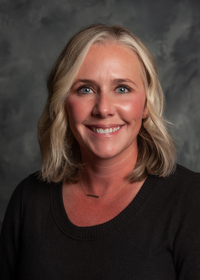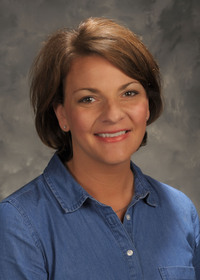Information Possibly Outdated
The information presented on this page was originally released on September 30, 2004. It may not be outdated, but please search our site for more current information. If you plan to quote or reference this information in a publication, please check with the Extension specialist or author before proceeding.
Interactive video saves travel costs
MISSISSIPPI STATE -- Mississippi's Extension Service employees still travel dirt roads, but they are also on super highways; their communication efforts have made similar progress.
New video conferencing lines are enabling the Mississippi State University Extension Service to save costs in travel and time as well as expand their reach into communities throughout the state, nation and world.
Dan Brook, head of Extension's Computer Applications and Services, described the 64KB frame relay lines installed in 1997 as "dirt roads" compared to the T-1 lines now installed or being installed in many county Extension offices.
"The benefits in e-mail speed alone are remarkable. The T-1 line is about 24 times faster than the frame relay line, and a file that would take an hour to download on the old system will take less than three minutes on a T-1," Brook said.
The video conferencing capabilities are opening even more doors for Extension workers and their clients. The first sites established in 1999 were at MSU and Verona. Then came sites at the Research and Extension centers in Stoneville and Raymond and the district office in Hattiesburg. Participants in video classrooms and conferencing got their first glimpses of the technology's potential.
"Three years ago, Extension conducted 32 video conferences. The next year, we had 103. That number doubled in 2003, and this year, we'll probably have 100 more," Brook said. "The accessibility to the sites and the links to specialists, professors or administrators in other locations are the keys to this technology's success."
Reba Bland, Extension leadership development area agent based in Lafayette County, said she and her co-workers across the state use the technology to video conference with Mississippi Homemaker Volunteers and Master Clothing Volunteers.
"Our 40 executive board members with the Homemaker Volunteers have been able to start planning their annual meeting much earlier by using the video system," Bland said. "In the past, they would have all their meetings at MSU; this way, we are saving on the cost of travel and can have more productive meetings by working out many of the details sooner."
Bland said the accessibility of the system helps groups involve a wider range of people. Individuals who might not be able to travel because of work, family or health issues may be more likely to attend a nearby video conference.
Susan Seal, distance learning coordinator for MSU's Extension Service, has witnessed the growth in the system's use. She credits the technology's success to MSU Extension's push to deliver educational information to a wider audience.
"We're ahead of most state Extension services with this technology. On any given day, it may be used in a one-on-one setting or to link more than 100 people learning about cattle nutrition or child-care workshops," Seal said. "We often use it for Extension meetings so that agents don't have to travel to MSU or other sites for meetings. Since we pay a flat rate for the service, using it is cheaper than a long-distance telephone call."



